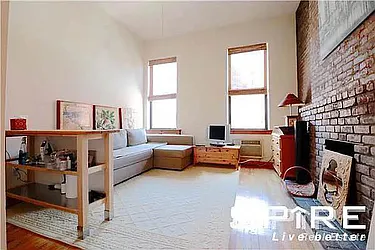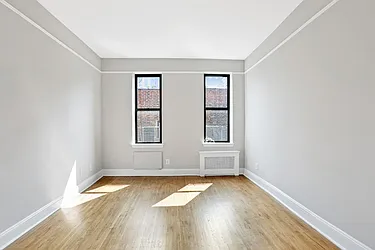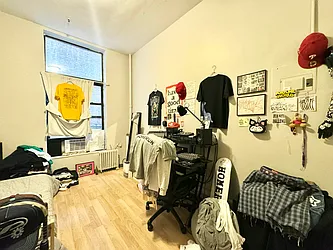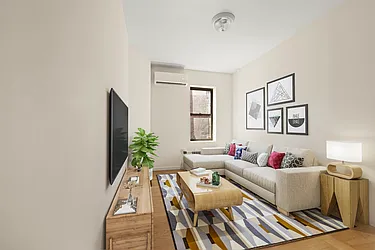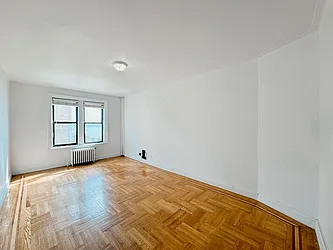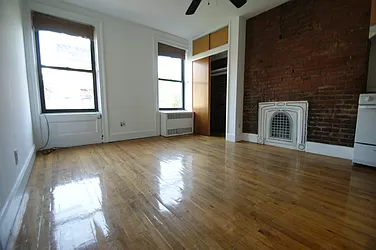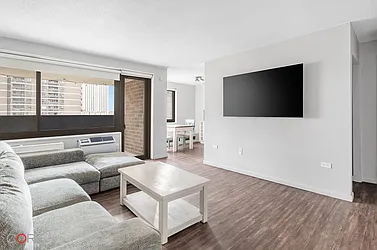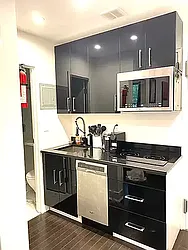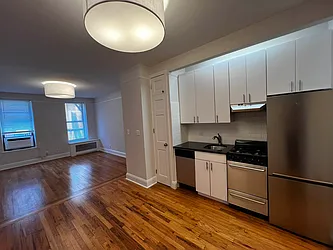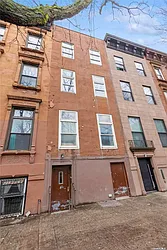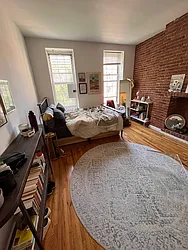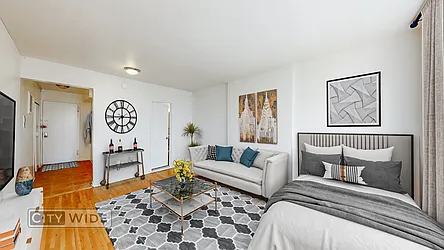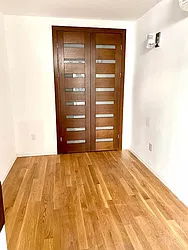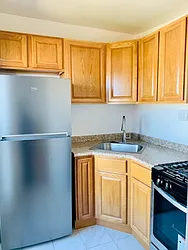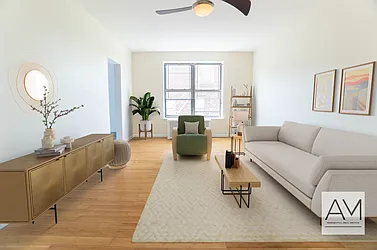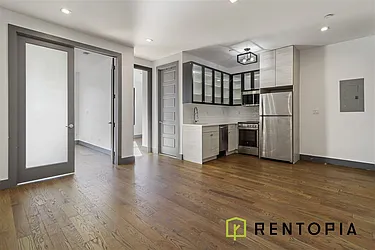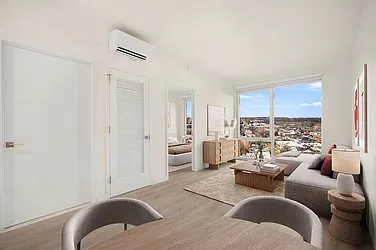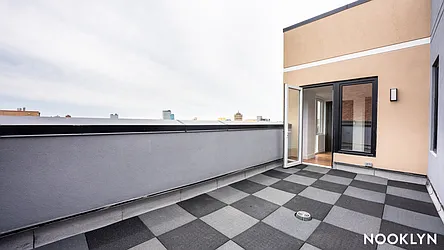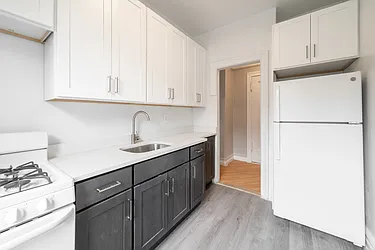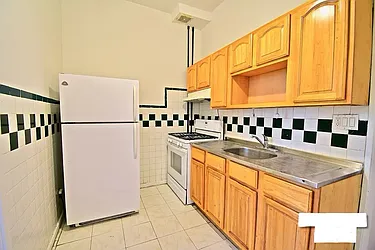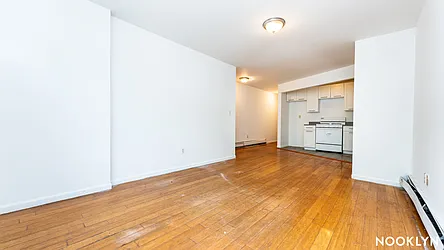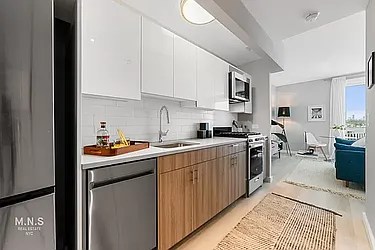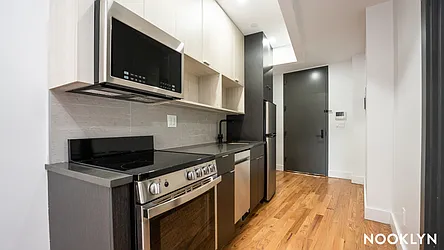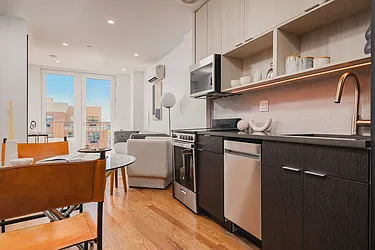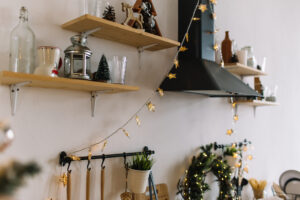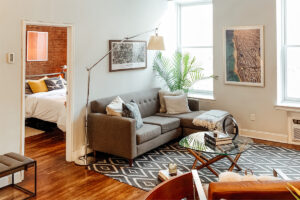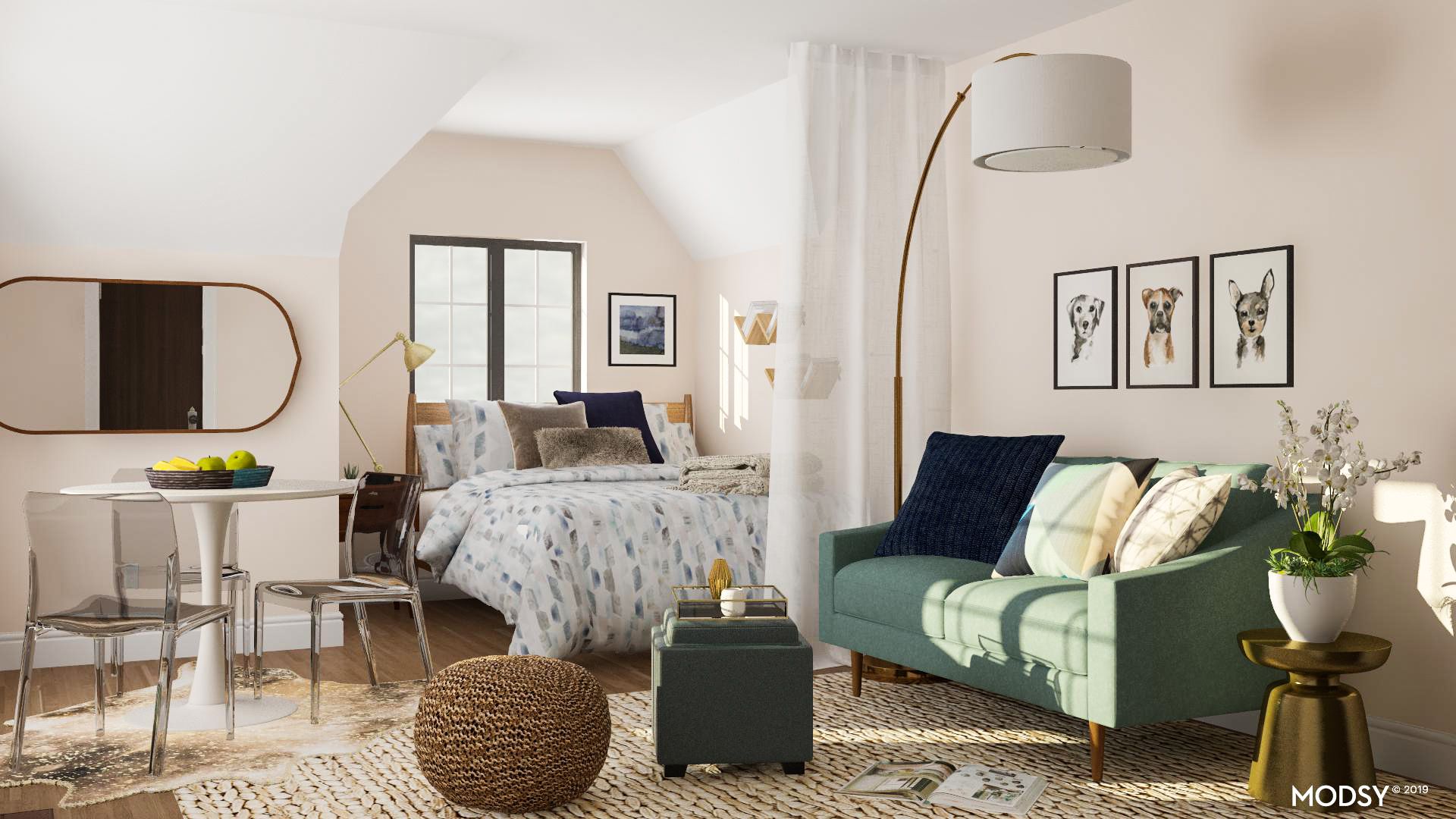
Studio apartments don’t have to be cramped shoeboxes! Our survival guide helps you make one room feel like home. (Courtesy of Modsy)
New York City is notorious for small spaces. Bars, restaurants, elevators, and sidewalks are all a bit cozier than in other parts of the country. The same is true for many people’s living situations. One-bedroom apartments are perfectly acceptable for a family of three, and college students might cram 10 people into one apartment. That’s why many New Yorkers have no problem living in a studio apartment. And it’s why NYC is filled with them.
There are plenty of jokes and social media threads about closet-sized bedrooms with communal bathrooms. But there are actually health and safety stipulations about what constitutes a legal studio apartment. It comes down to the legal definition of a bedroom. According to the city’s building code, a legal bedroom in NYC must be at least 80 square feet, with a minimum width and a minimum ceiling height of eight feet. There must be at least one window opening to an outdoor space and two ways to exit (i.e., a window and a door), and the room can’t be used as a passage into another room. There are some variations if the room is in a basement.
If there isn’t enough space in an apartment to create a legal bedroom, the whole space can be one main room for living and sleeping. That’s when it’s referred to as a studio. But what studios lack in space and privacy they often make up for in coziness and charm! If you’re living in a studio apartment, here’s a survival guide for making the most of your one-room home.
Manhattan Studios Under $3,000 on StreetEasy Article continues below
Tip #1: Embrace Minimalist Living
First and foremost, to survive in a studio, you must declutter your life. Get rid of any furniture, clothing, artwork, etc., that isn’t necessary.
“I donate or give away a lot of things I don’t use anymore,” Alexa Batista, a studio apartment owner in Chelsea, tells StreetEasy. “I do this throughout the year with things like clothes and books. I also don’t like drawers to be overflowing. I subscribe to the Marie Kondo folding techniques, and anything that doesn’t fit or that I don’t wear, I remove from the apartment.”
A good rule of thumb to keep clutter at bay: If it’s been more than a year since you’ve used something, get rid of it. The city is full of great places to donate big items like furniture. Some of them will even pick it up for you!
Tip #2: Smart Small Space Organization Hacks
Organization is key to living in a studio apartment, so it’s essential to figure out stylish storage options. Here are some great hacks.
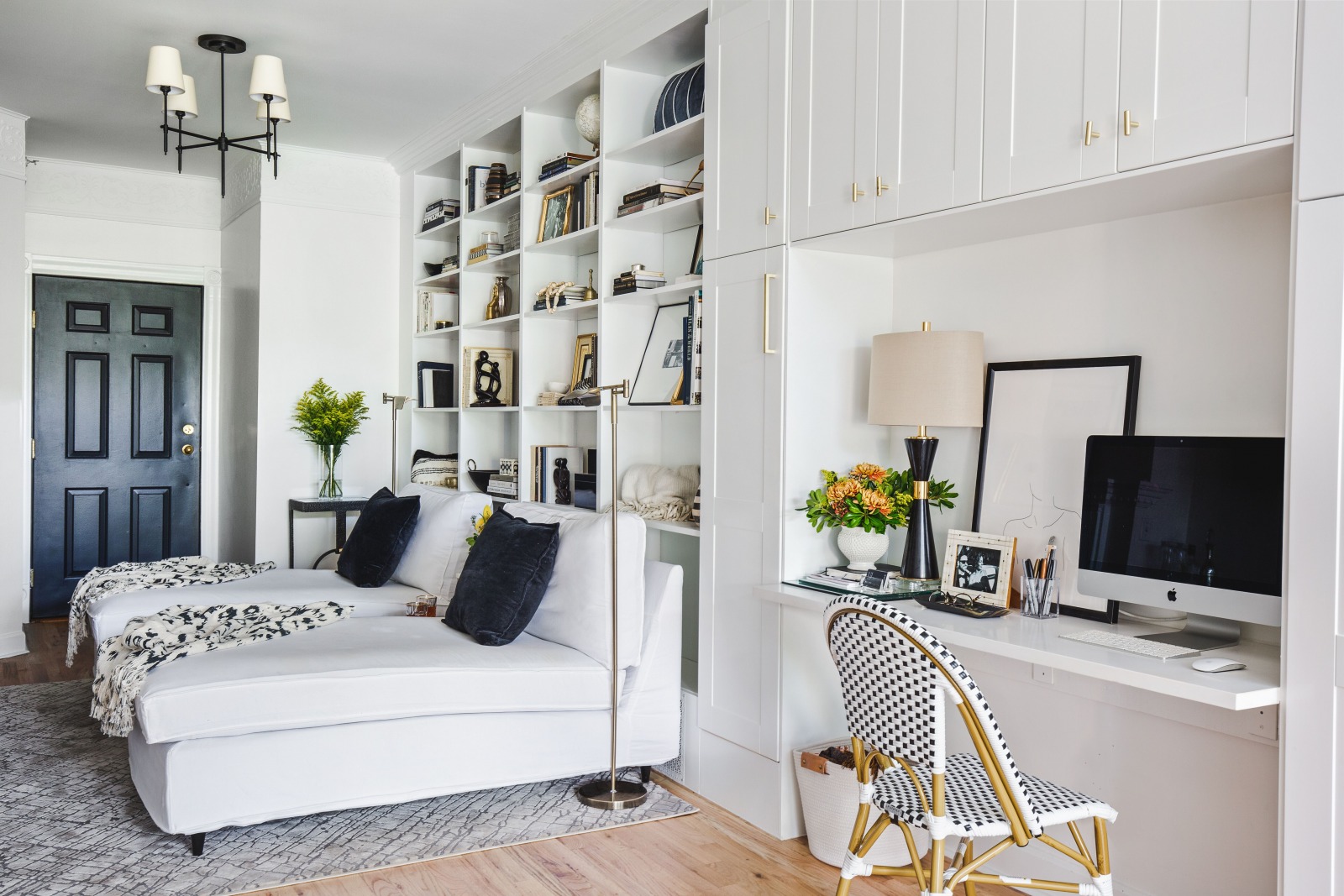
Storage that goes all the way up to the ceiling frees up precious floor space. (Courtesy of Havenly)
- Think Vertically: Make the most of the square footage you have by going vertical. “One of our favorite narrow-space design ideas is using bookcases in creative ways,” says Modsy VP of Style Alessandra Wood. “Bookcases make use of your space vertically. So you can maximize storage while minimizing the use of floor space.” Try using a bookcase in place of a nightstand or side table.
- Embrace Baskets: Keep multiple items grouped by adding boxes, bins, or baskets under the bed, in the closet, and even on bookshelves. “Storing loose items in a specific place makes a space look less cluttered,” says Lee Mayer, CEO, and co-founder of Havenly. “It also helps to ensure that you can quickly locate them.”
- Make It Multi-Functional: “All furniture should hold multiple purposes,” says Batista. “For example, my bed has built-in storage underneath it.” The Container Store, Ikea, and Bed, Bath & Beyond are great resources for efficient and affordable pieces.
Tip #3: How to Divide a Studio Apartment into Multiple Rooms
In studio-apartment life, one room serves as your bedroom, dining room, and living room. To make each of those areas feel a bit separate, you want to distinguish each of them in some way. The easiest way to visually divide up a room? Use throw rugs to set the foundation for distinct spaces. “Consider different shapes and sizes,” says Mayer. “You can use more than one rug. Just ensure the colors, patterns, and textures are balanced.” Rugs can work in conjunction with other decorative items, too. “My living room area has its own carpet, seating, and art, so it looks more defined,” says Batista.
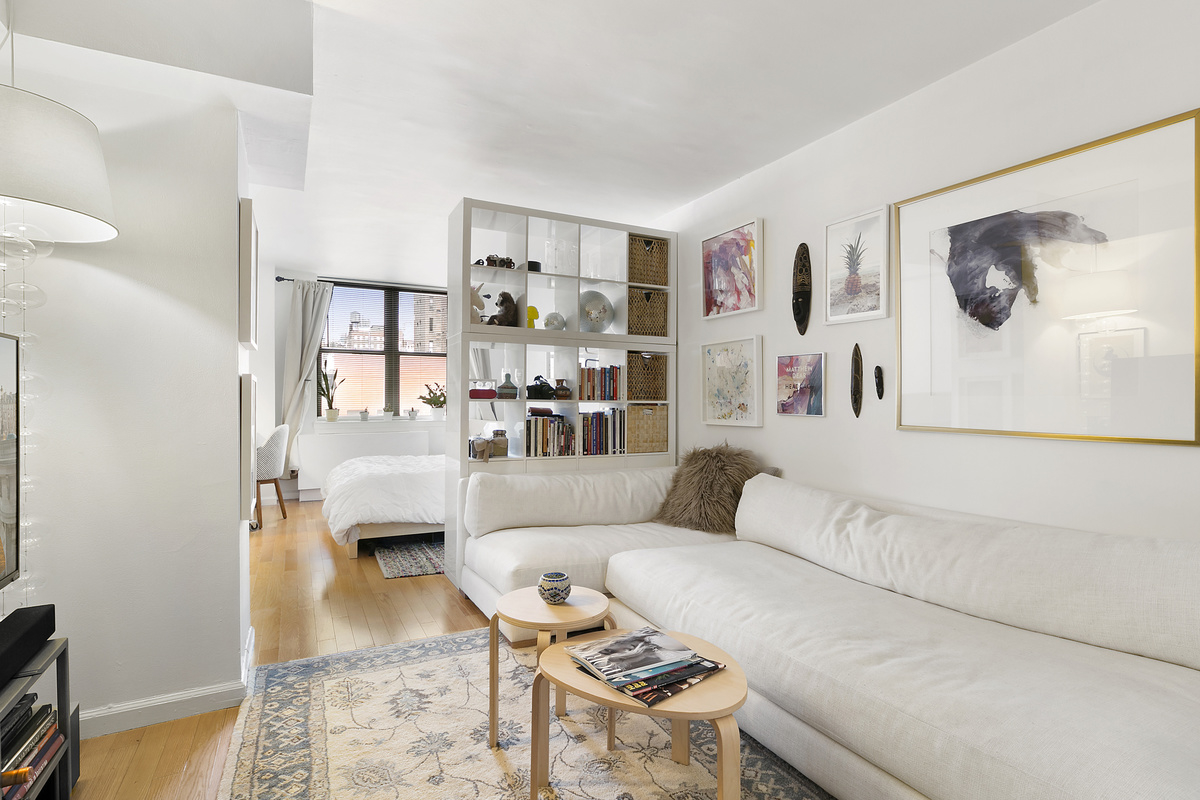
Open shelving helps separate the sleeping area from the living area, while still letting light through. (From a listing at 222 W. 14th St.)
Furniture is also a great way to create different “rooms.” “We often encourage utilizing furniture to separate a space,” says Mayer. “For example, the back of a sofa can act as a makeshift wall or divider between a living area and a bedroom area.” Closed bookshelves can create the illusion of a wall: “I did this in my own former studio,” says Wood. “I actually put a desk on the backside, bolted everything together, then bolted it to the wall. It really divided the space.” On the other hand, an open shelving unit creates the feel of a divided space without blocking the light. It’s also a great way to showcase books or curated collections. Wood’s pro tip: “Bring it out from a wall and use two to extend the length.”
Tip #4: Studio Apartment Lighting Ideas
Harsh overhead lighting can be unkind to a small space, drawing attention to low ceilings, dirty windows, and unattractive architectural details. And in older buildings, overhead light fixtures are often all or nothing, meaning you can’t modulate the amount of light with a dimmer. If you’re living in a studio apartment that’s saddled with this kind of lighting, consider layering in lamps, which create a sense of depth.
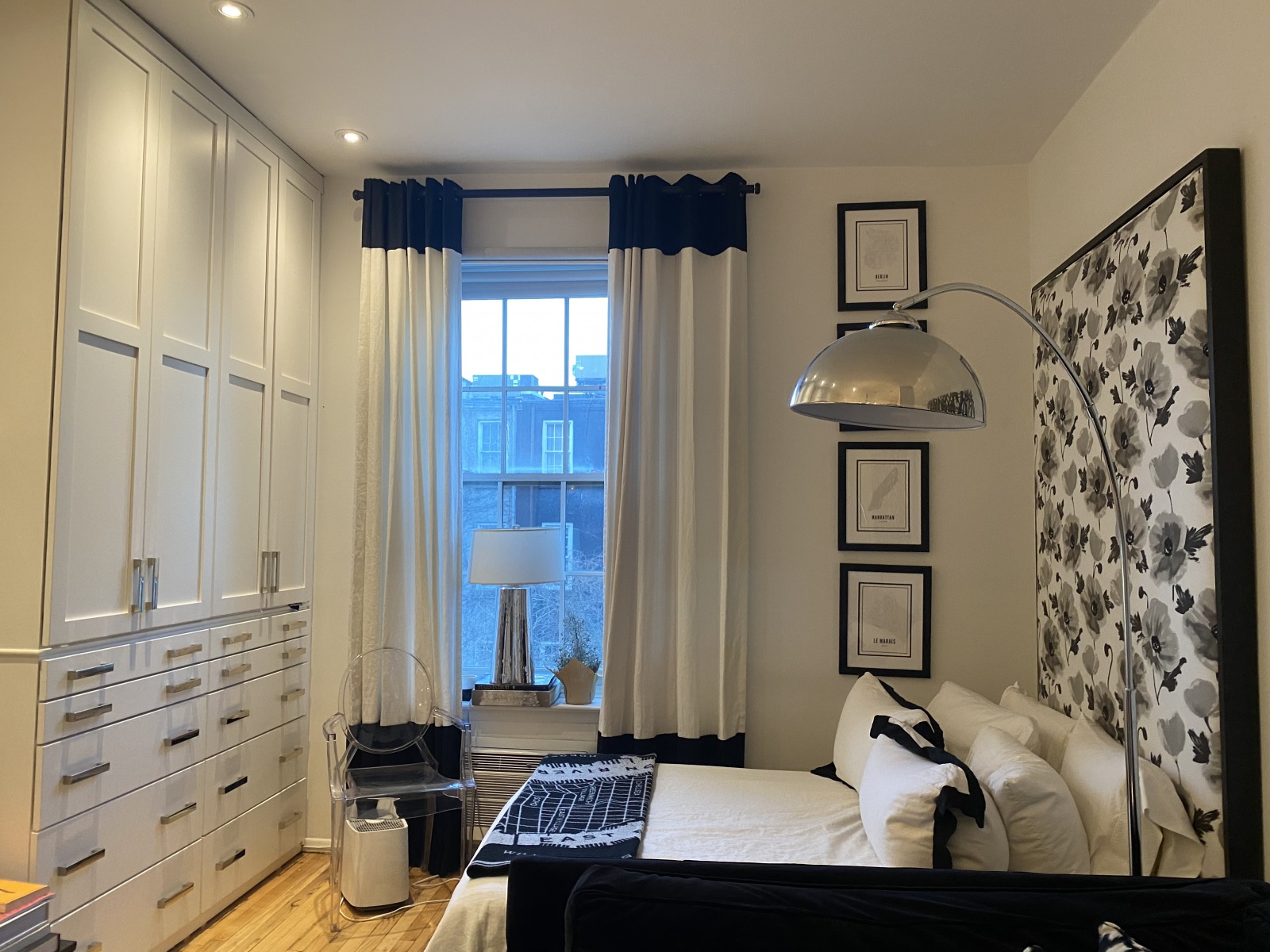
Different types of lamps add depth and create a flattering light.
But you want to be sure the extra lighting isn’t eating up your precious floor space. “Table lamps and task lighting are great, small-scale decor elements that evoke style and create visual interest,” says Mayer. “Plug-in sconces are another option to add both warmth and an artful touch to a wall area without taking up valuable room real estate.” Even floor lamps can be a space-saving lighting solution when they are nestled behind a chair or sofa, or even anchored at the corner of a bed.
Tip #5: Tips for Keeping Your Apartment Clean
Messiness is a small space’s worst enemy, so be fastidious! Make sure to do the dishes after every meal and dust regularly. More options to help keep small spaces looking neat and clean:
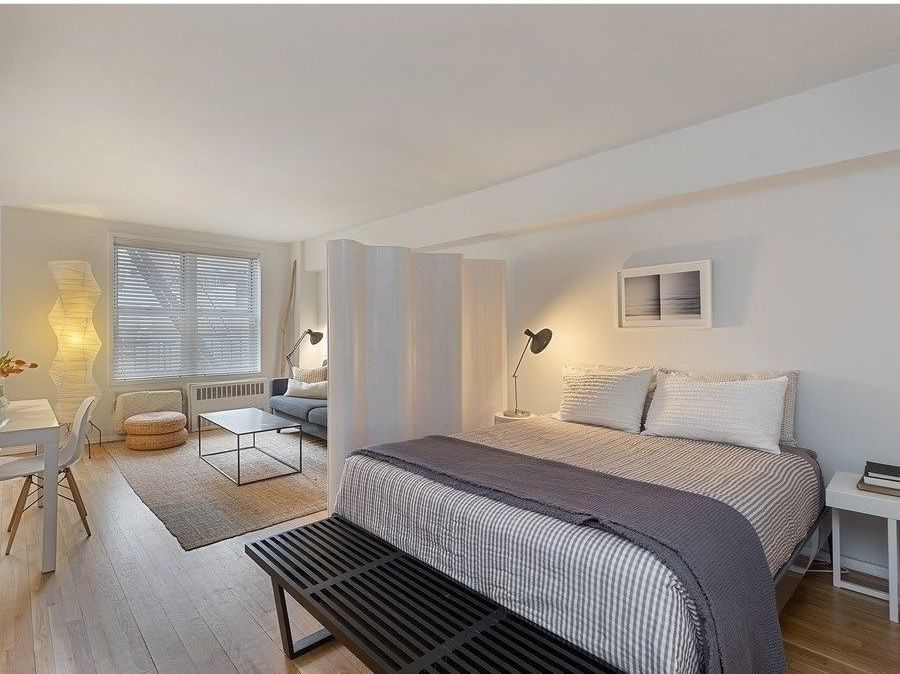
A nicely made bed makes the whole apartment feel neat and tidy. (From a listing at 25 W. 13th St.)
- Make Your Bed: “You’ll be amazed how a made bed immediately sets the tone for calm and order, which encourages you to keep the rest of your place tidy,” says Mayer. “This is especially important in a studio, where your bed is always visible!”
- Put Up Hooks: “Install hooks right by the entry for hanging things like coats, purses, and keys, so they don’t get tossed on top of your much-needed resting areas,” Mayer advises.
- Use Double-Duty Pieces: “A storage bench or ottoman is a useful piece of furniture and also a perfect place to stash dirty laundry,” says Wood. “Also, look for coffee tables with built-in storage.”
Brooklyn Studios Under $3,000 on StreetEasy Article continues below
Tip #6: Tips for Painting Your Space
When you’re living in a studio apartment, you might think there’s no opportunity to jazz up such a small space with some color. But, if your landlord allows it, painting can be completely transformative and help you customize your space to your own unique style.
“Paint adds dimension and personality to any space,” says Mayer. Just be careful with the colors you choose. “Darker colors can make a space feel smaller, depending on your room’s lighting,” says Wood. “Choose a color that you love and that feels uplifting in your space.” You can even go all white, as Batista did: “I painted my entire apartment white, including the brick, which made it seem brighter and larger.”
Tip #7: Tricks for Creating More Visual Space
You can’t change the amount of space in your studio. But you can use some visual tricks to make it look bigger:
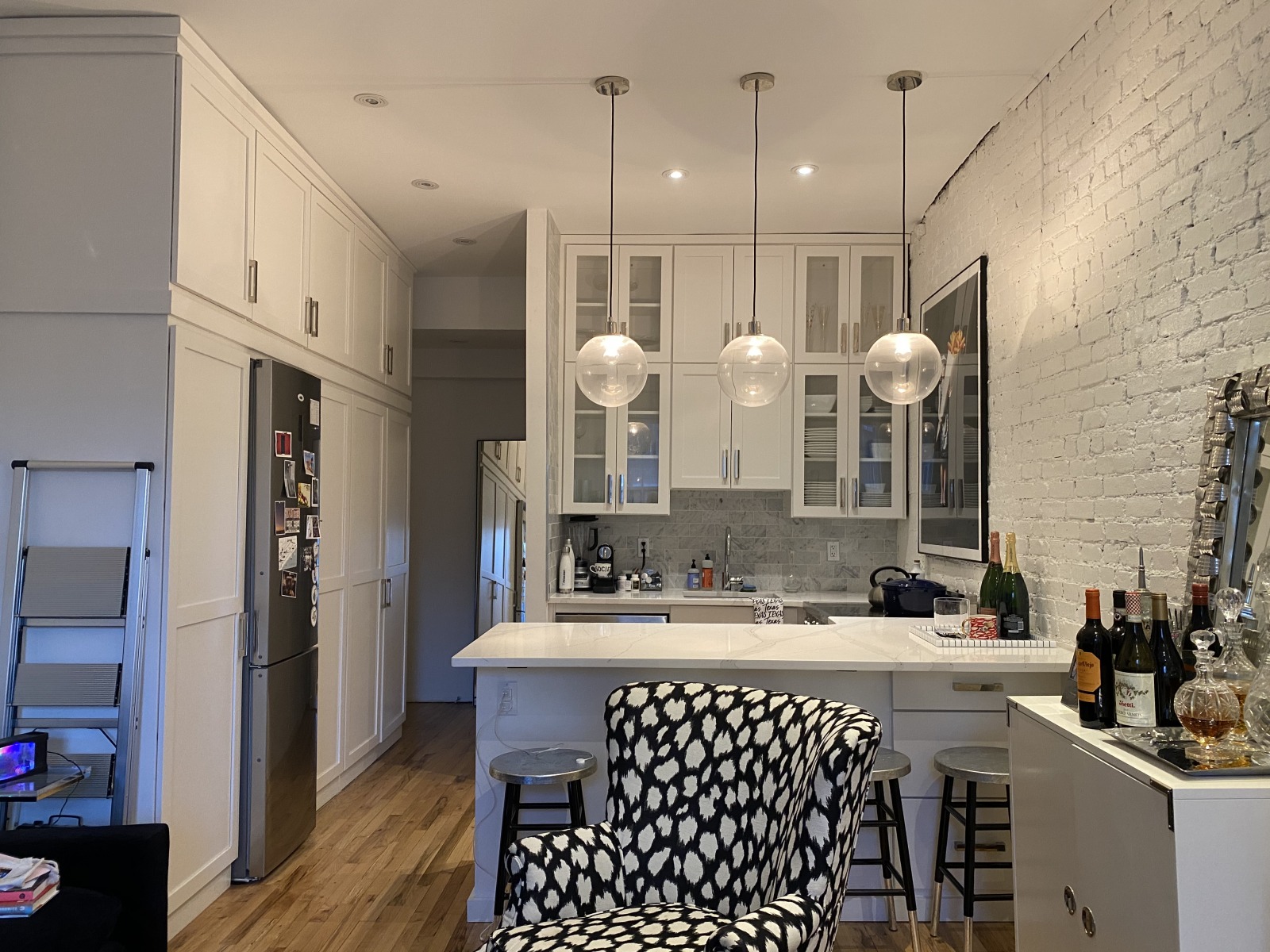
A well-placed mirror can brighten up an otherwise dark corner.
- Hang a Mirror: “Mirrors are great for small spaces, as they reflect light and create the illusion of more space,” says Wood. “However, don’t go overboard. One large, well-placed mirror is just enough.”
- Opt for Clear Pieces: The oldest trick in the interior designer’s handbook? See-through furniture! “Pieces made of glass or acrylic are a great way to fool the eye into thinking your space is larger than it is,” says Wood. “Skip the heavy wooden coffee table in favor of a clear option to make your living space look more open and airy.”
- Keep Furniture Off the Floor: Similarly, nothing makes a small space look even smaller than a big, bulky sofa plopped right on the floor. Instead, try using furniture that sits high up off the floor. Being able to see the floor space continue underneath the furniture makes a room look roomier. Pieces with long, tapered legs are a perfect choice.
More Small-Space Tips From StreetEasy
—
Inspired to find your next place in New York? Whether you’re looking to rent or to buy, search NYC apartments on StreetEasy.

